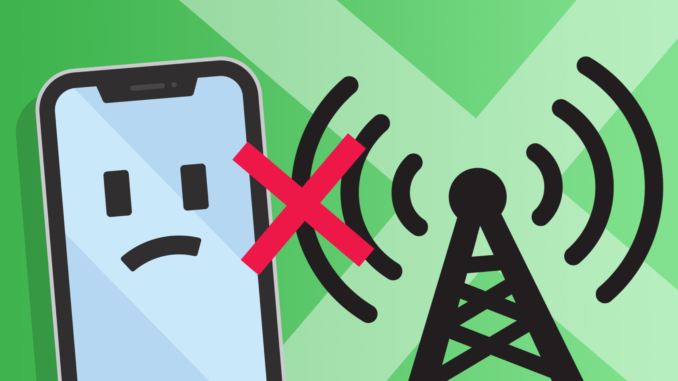
HILLSDALE—For students, staff, and all others on the campus of Pascack Valley High School, cell phone service is virtually non-existent. Without being connected to the school’s Wi-Fi network — permission for access is rare — various forms of messaging are mostly unable to be sent or received by anyone on school grounds, due to PV being situated within a cellular “dead zone.”
“All faculty, staff, and students lack cell signal, not only in the building, but outside the building, and even in the immediate neighborhood,” Paul Zeller, director of technology and communication for the Pascack Valley Regional High School District, told Pascack Press on June 2.
He said, “There are some areas outside that have very limited coverage, but by and large, the entire Pascack Valley High School campus largely is without cell signal.”
PVHS, at 200 Piermont Ave., serves families in Hillsdale and River Vale. Given its location in a low-elevation area, finding a way to bring cell service to the school has proved difficult. This is not the case at Pascack Hills High School in Montvale, where cell phone service is accessible to students and staff.
PVHS administrators have made efforts to negotiate with cell phone carriers for more than a decade, but thus far no deal has been reached to bring service to the school.
Zeller said the district is in exploratory talks with consultants who are speaking with providers on its behalf. According to Zeller, these talks have gone on in the recent past, including within the last year, when PV inquired about building a cell tower the size of a large garbage can.
Zeller told Pascack Press that the district has yet to hear back from AT&T and T-Mobile. Verizon responded with plans of “implementing a solution” in the vicinity of PVHS that they feel will improve the signal in the area, but there is no timeline on when that project will begin.
If a provider were to create a proposal for the district to add cell service, the PVRHSD Board of Education would discuss it in hopes of agreeing on a contract.
“We’re trying, and in fact, right now we’ve sent another request to cellphone carriers to reach out waiting to hear back, but they’re not terribly motivated,” Zeller said. “But I would love to see cell phone coverage.”
According to Hillsdale Mayor John Ruocco on June 6, “The condition is limited to within the high school building, so no residents have complained.”
He said, “Our police department has been working with the high school administration to address the problem as quickly as possible, begun even before the recent events of the last month [the mass shooting at Robb Elementary School in Uvalde, Texas], given the heightened need to ensure uninterrupted communication.”
Convenience, security issues
Meanwhile, the lack of service has provided a unique set of challenges to parents and guardians who have children attending PVHS.
“I really do think it is a safety issue, first and foremost, but it is also a convenience issue,” said Marc Rothenberg, a parent with two children attending the school. “Kids’ schedules are very busy, and parents’ schedules are very busy. Not everyone gets the bus and many stay after school for activities so there’s always logistics and it just makes it that much more complicated when you can’t communicate with your child. Sometimes I just don’t know where my child is.”
The school does have a Wi-Fi network, but for the most part, only district-issued devices such as laptops or faculty-owned cell phones, are allowed to connect. Zeller said there are exceptions made for students, such as to accommodate a medical device.
“Cell phones are a distraction,” Zeller said. “We are trying to minimize the number of distractions in the classroom. Teachers are not allowed to use their cell phones while they’re in classrooms, so that’s not an issue for us, but with children, it’s a little harder.”
With cell phone use out of the equation, parents typically email or Google Chat their children while they are on school grounds. Those sites are not blocked by the administration, so students can access these messages with their laptops when they are connected to Wi-Fi.
Regardless of those alternative methods of communication, the inability for parents to reach their children via cell phones remains a point of contention for community members, particularly in this modern technologically advanced era.
“Technology is everywhere in the world we live in,” said Erica Ban, a River Vale resident with two daughters at PVHS. “And of course I didn’t grow up like this; I went to school and didn’t have a cell phone and I was fine, but being able to reach your parents is just what we have come to expect.”
In the event of an emergency where an intruder enters the building, Zeller said the district has recommendations from law enforcement for students and staff members to not use their cell phones during a lockdown to contact family members. If someone were to make or receive a call in a dangerous situation, a criminal could potentially hear those voices and be more inclined to try and enter the particular room where the noise was coming from.
“While we understand the desire for students to communicate with loved ones during an incident such as this, this can garner the attention of such a perpetrator and actually bring more harm,” Zeller told Pascack Press. “The schools have emergency communication plans in place to safely keep students, staff, parents and the community aware of an emergency situation.”
Despite unsuccessful efforts so far, PVHS’s administration is determined to continue searching for a way to get a good cell signal on campus.
“Finding a solution to get cell signal into Pascack Valley High School is an initiative we are working on, but being at the mercy of cellular providers, we do not have any details as to the feasibility or timeline,” Zeller said.
